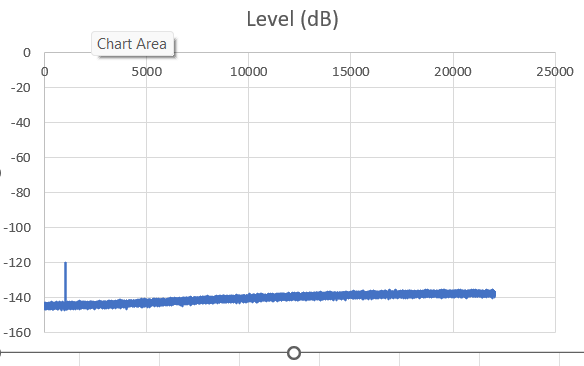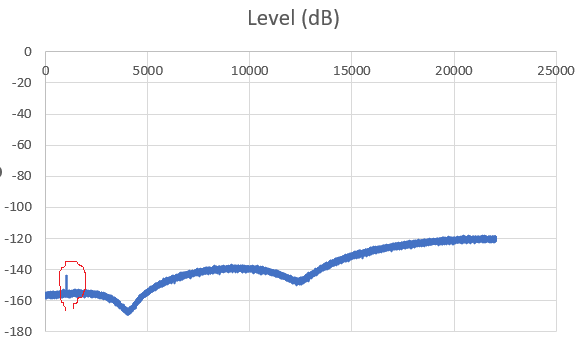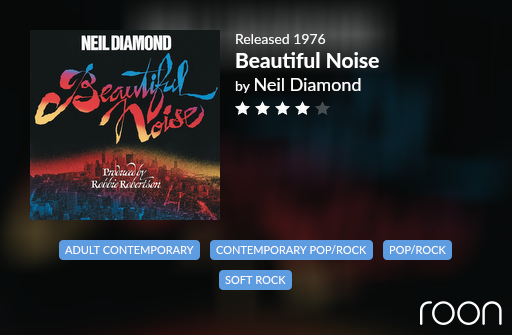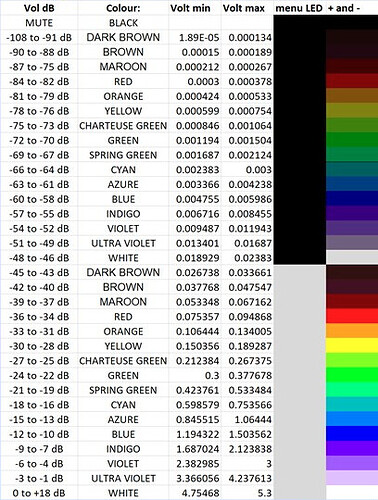Actually, if you hear a tone, it means your system’s noise floor is below -120 dBFS, which is good.
@Graeme_Finlayson & others I truly enjoy reading your posts.
Why?
Because I learn something each time, which is great.
You clearly know your stuff.
I took up your challenge and played the dropbox file.
On my Chord Mojo 2, at nearly full volume with headphones carefully, but not fully placed upon my head. Guess what, I couldn’t hear it. ![]()
This was played on an iPhone 8 via USB to my Mojo 2.
I don’t think I’ll need the PS Audio AirLens.
My mediocre Dell 3050 Micro, my normal electrcikery, cheapo USB cables, PoE switches, Cat6 ethernet cables will serve me well for years to come.
These debates are repeated weekly and the end result is the same. So why do we keep going around in circles.
Could we just not leave out the audiophile bickering and focus on music, whiskey, beer, motorbikes, ancient mechanical audio equipment.
This forum would get cleared up, support posts could get the focus and attention they need. The Moderators less grumpy ![]() . Danny and his team can focus on making Roon perfect (89% there
. Danny and his team can focus on making Roon perfect (89% there ![]() ). Users like me not playing forum police
). Users like me not playing forum police ![]()
![]() .
.
Let’s join together and rejoice in the wonders of music, new and old and share stories and memories.
Peace ![]()
![]()
![]()
![]()
Thanks.
A lot of people can’t hear the test track, but that doesn’t mean it’s buried in the noise floor. It could be that your audio chain doesn’t have enough gain to bring it into audibility.
-120 dBFS is to all practical intents and purposes considered “silence”. I made a pink noise track originally as I was curious about how quiet my system really was (someone was arguing my RPi was flooding my system with noise) and the test track ensures the DAC doesn’t mute its outputs in response to no input. Turned right up, I could hear noise, but was it the track or random noise? So, the 1 kHz test tone was the next step. And I could clearly hear it.
People worry too much about “noise”. The popular hi-fi press and manufacturer’s have elevated its status to the Boogeyman of digital sound reproduction.
I agree on all the other points you make. I hate the bickering and I try hard to avoid these types of discussions nowadays.
Now and again, I can’t bite my tongue and feel the need to respond to fanciful claims with some grounded science and measurement.
Time to take my leave for now - I’m off to listen to some tunes whilst I sand and polish a speaker cabinet…
Very curious. Could I trouble you to PM me photos of your finished production ![]()
I’m painting and decorating today ![]()
Happy to report I can clearly hear it, and at a lot less than max volume. I’m jazzed, because now whenever I read “your system isn’t resolving enough”, I can confidently answer, “but sir, it is” ![]()
It’s the same old arguments over and over anyway. I wish hifi reviewers could re-adjust their prejudices, this isn’t 1985, the early problems (with digital) are long solved… as @Fernando_Pereira points out.
Carried out this little test again.
I admit, the first time I did not put the Mojo 2 at full volume. This time I heard it wearing my headphones fully over my ears. So my systems noise floor is below -120dBFS.
So smugly I can say my system is resolving ![]()
![]()
The Mojo 2 has been know to power high sensitivity speakers directly.
Normal listening is around Maroon/bright red.
Please continue with that ![]() There is a lot of learning in you comments.
There is a lot of learning in you comments.
THX
Torben
I generated a -120dBFS sine tone (44.1/16) and I couldn’t hear anything at max volume with my THX AAA 789 headphone amp. I’ll try with my receiver, hopefully the 125W power amp will be enough.
Probably a dumb response, but…
![]()
… are you being sarcastic?
What do you expect to hear other than dithering noise with a -120dB tone at 16 bit resolution, if you had enough gain?
I’m not being sarcastic. (I’ve been working on that…)
With dither alone, you can easily accommodate a -120 dBFS sine wave everywhere across the audible spectrum with 44.1/16:

Using noise shaping, you can make almost 20 dB more room at 1kHz, so you can encode a sine wave at -144 dBFS (the theoretical limit of 24 bits):

Red book is utterly underestimated.
Haha well Torben, what do you expect here? Nice to see your enthusiasm and will to gain a broader feedback. But as has been shown on numerous other threads this is like a dead end here.
Sure there are audible differences when galvanic isolation / a fiber media converter for example is in place or reclocking devices (which weird as it may seem which introduce even higher jitter/noise values on measurements) do indeed improve the sound.
Including of course this bumf I just read. What in the world does “hearing it” have to do with it? Humans have some of the worst and most imaginative sensory apparatuses in the whole animal kingdom, varying continually, day to day, hour to hour! Measure it, don’t listen to it!
Of course, with this piece of seemingly typical PS Audio gear, it’s possible to know how unlikely its claims are by simple reasoning from technical fundamentals – even measurements are unnecessary. Any perceived improvements would be only in the listener’s mind. So for that, the gullibility of the consumer would be the most important factor.
Currently my computer generates this noise:

I’m glad I can hear it.
I so want to give you a 1000 likes for that @Peter_Bruderer . I have no ![]() s, so IUO - paid in full
s, so IUO - paid in full
On the one hand, your post seems to support the concept of the AirLens, and on the other, it also claims that more noise and jitter can sound more pleasing?
It can’t be both, so which is it?
Maybe you should have a read of some of the AES (Audio Engineering Society) standards on ethernet and jitter, so that you fully understand the concepts being discussed?
Unfortunately, since these are proper engineering papers as opposed to advertorial “white papers”, you have to pay for them, or if you join the AES, they’re free to download.
Thanks for this. I have my max volume of my Classe set well below what it can reach and I was able to hear the tone. I just got it back from Deltronics after a checkup and cleaning. This puts any kind of itch for further upgrades at rest. I am amazed daily with my system. Thanks for all your info on I2S and that I should not concern myself with it over USB. Now get back to those plinths. We all want to see those speakers completed. ![]()
It’s great to hear that so many others are able to resolve the 1 kHz test tone. It takes a low noise floor and a lot of gain to pull it into audibility.
Besides demonstrating that your system has a low noise floor, it also demonstrates that even at peaks of 120 dB SPL, system noise is only barely at the threshold of human audio perception.
A very quiet room is around 30 dB, a heavily treated and sound-proofed recording studio about 20 dB.
The sound of a pin dropping is about 10 dB.
120 dB is on the threshold of discomfort. The noise floor is still 10 dB quieter than a pin dropping at this point. No one is going to be able to hear it, or the pin dropping for that matter.
Edit
As to the speakers, I’ve had a couple of setbacks. My Mirka sander blowing up, followed by me having what would appear to be COVID. Didn’t have a test around to confirm, but the symptoms are consistent and the last few days have been rough. 400 → 2000 sanding and polishing of the second speaker over the next couple of evenings, final wiring and assembly, then into the lounge on makeshift supports before progressing with the plinths.
Sorry to hear it! Take care.
